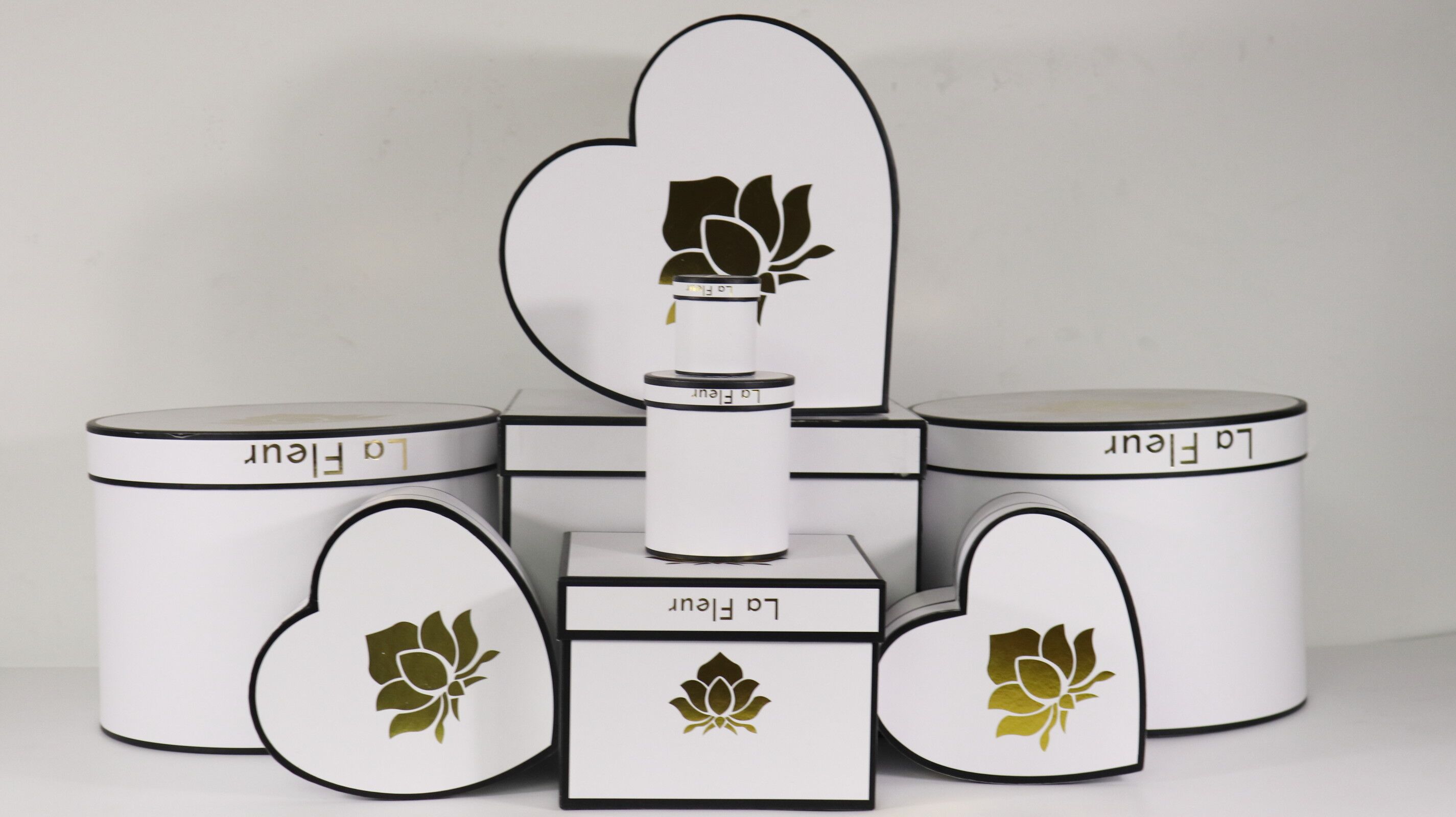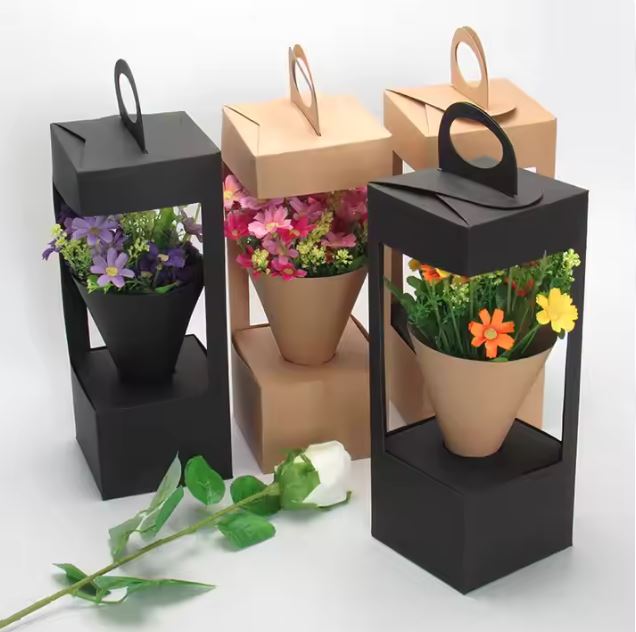- All
- Product Name
- Product Keyword
- Product Model
- Product Summary
- Product Description
- Multi Field Search
Views: 199 Author: XianDa Publish Time: 2024-12-20 Origin: Site

Content Menu
● How Deep Should a Window Flower Box Be?
● The Importance of Depth in Window Flower Boxes
>> Standard Depth Recommendations
>> Factors Affecting Depth Choice
● Choosing the Right Materials
● Planting Tips for Window Flower Boxes
● DIY Window Flower Box Project
● Sourcing Your Window Flower Box
>> Flower Paper Box Supplier Options
● Environmental Considerations
● Advanced Planting Techniques
● Overcoming Common Challenges
>> Overwatering
● Flower Paper Box Suppliers: A Closer Look
>> Advantages of Flower Paper Boxes
>> Considerations When Using Flower Paper Boxes
● Future Trends in Window Box Gardening
Window flower boxes are a charming way to add color and life to your home's exterior. They can transform a plain facade into a vibrant display of nature's beauty. However, to ensure your plants thrive, it's crucial to choose the right size box, particularly when it comes to depth. Let's explore the ideal depth for window flower boxes and other essential factors to consider when creating your perfect floral display.
The depth of your window flower box plays a vital role in the health and growth of your plants. A box that's too shallow will limit root growth and may cause plants to dry out quickly, while an excessively deep box can lead to overwatering and root rot.
Most experts agree that the minimum depth for a window flower box should be 8 inches. This depth provides enough space for the roots of most annual flowers and small plants to grow comfortably. However, for a wider variety of plants and more robust growth, a depth of 10-12 inches is often recommended.
Window flower box depth diagram

Several factors can influence the ideal depth for your window flower box:
1. Plant Selection: Different plants have varying root depths. While shallow-rooted plants like pansies and petunias can thrive in 8-inch deep boxes, plants with deeper roots such as geraniums or small shrubs may require 10-12 inches of depth.
2. Climate: In hotter, drier climates, a deeper box can help retain moisture and protect roots from extreme temperatures.
3. Watering Frequency: If you can't water your plants daily, a deeper box will hold more soil and moisture, reducing the frequency of required watering.
4. Aesthetic Preferences: Deeper boxes can create a more substantial visual impact and allow for a greater variety of plant heights and arrangements.
When selecting a window flower box, consider not only the depth but also the material. Popular options include:
- Wood (cedar, redwood)
- PVC
- Fiberglass
- Metal (aluminum, copper)
Each material has its pros and cons in terms of durability, weight, and aesthetics. For instance, PVC boxes are lightweight and low-maintenance but may not have the same visual appeal as natural wood or metal boxes.
Regardless of the depth you choose, proper drainage is crucial for the health of your plants. Ensure your window flower box has adequate drainage holes to prevent water from pooling at the bottom, which can lead to root rot.
Window box drainage diagram
Once you've selected the right depth and material for your window flower box, follow these tips for successful planting:
1. Use a high-quality potting mix designed for containers.
2. Consider adding water-retaining crystals to the soil to help maintain moisture.
3. Plant a mix of upright and trailing plants for a balanced look.
4. Group plants with similar water and sunlight needs together.
Window box planting arrangement
Proper maintenance is essential for keeping your window flower box looking its best:
- Water regularly, especially during hot weather.
- Fertilize every 2-4 weeks with a balanced, water-soluble fertilizer.
- Deadhead flowers to encourage continuous blooming.
- Prune plants as needed to maintain shape and prevent overcrowding.
Your window flower box can be a year-round feature with proper planning:
- Spring: Plant early-blooming annuals like pansies and primroses.
- Summer: Switch to heat-tolerant plants such as petunias and geraniums.
- Fall: Incorporate autumn colors with chrysanthemums and ornamental kale.
- Winter: Use evergreen branches, berries, and cold-hardy plants for winter interest.
Seasonal window box displays
For those who enjoy DIY projects, creating your own window flower box can be a rewarding experience. Here's a basic guide:
1. Measure your window and decide on the desired depth.
2. Cut cedar boards to size for the bottom, sides, and ends.
3. Assemble the box using weather-resistant screws.
4. Add drainage holes to the bottom.
5. Sand and finish the box as desired.
6. Install the box securely under your window.

Get creative with your window flower boxes:
- Use them for herb gardens in kitchen windows.
- Create a succulent display for low-maintenance beauty.
- Incorporate solar-powered lights for nighttime ambiance.
- Use window boxes as part of a vertical garden system.
Innovative window box ideas
When looking for the perfect window flower box, consider various options:
1. Local Garden Centers: Often have a selection of ready-made boxes.
2. Online Retailers: Offer a wide variety of styles and materials.
3. Custom Builders: Can create boxes to your exact specifications.
4. Flower Paper Box Suppliers: While primarily focused on packaging, some flower paper box suppliers may offer decorative options suitable for window displays.
While not traditionally associated with window flower boxes, some flower paper box suppliers have expanded their product lines to include decorative options that can be adapted for use as temporary or seasonal window displays. These boxes are often lightweight, eco-friendly, and come in a variety of colors and patterns.
Flower paper box display
Benefits of using flower paper boxes from a flower paper box supplier include:
- Affordability
- Eco-friendliness
- Versatility for seasonal changes
- Lightweight for easy installation and removal
However, it's important to note that paper boxes may not be suitable for long-term outdoor use without proper weatherproofing. They can be an excellent option for temporary displays or indoor window boxes.
As we become more environmentally conscious, consider the sustainability of your window flower box:
- Choose sustainable materials like reclaimed wood or recycled plastics.
- Opt for native plants that require less water and maintenance.
- Use organic fertilizers and pest control methods.
- Collect rainwater for watering your plants.
Well-maintained window flower boxes can significantly enhance your home's curb appeal and potentially increase its value. They create a welcoming atmosphere and show pride in homeownership.
Home with window flower boxes
For those looking to take their window box gardening to the next level, consider these advanced techniques:
Incorporate trellises or small stakes to encourage climbing plants, creating a stunning vertical display. This technique not only adds visual interest but also maximizes the space in your window box.
Utilize companion planting principles to create symbiotic relationships between plants. For example, pair basil with flowers to repel pests naturally.
Plan your plantings to ensure continuous blooms throughout the season. As one set of plants finishes blooming, another begins, maintaining a vibrant display.
Even experienced gardeners can face challenges with window boxes. Here are some common issues and solutions:
Symptoms include yellowing leaves and soggy soil. Ensure proper drainage and adjust your watering schedule based on plant needs and weather conditions.
Signs include wilting and dry, crispy leaves. Consider installing a drip irrigation system for consistent moisture, especially if you're often away.
Regularly inspect your plants for signs of pests. Use natural deterrents like neem oil or introduce beneficial insects to combat infestations.
Embrace modern gardening technology to enhance your window box experience:
- Use smart irrigation systems that adjust watering based on weather forecasts.
- Install UV-resistant LED grow lights for plants in less sunny locations.
- Employ soil moisture sensors to optimize watering schedules.
Window flower boxes have a rich history and cultural significance in many parts of the world. In European countries like Germany and Austria, they're not just decorative but often part of local traditions and competitions for the most beautiful floral displays.
While traditional window boxes are popular, the innovative use of products from flower paper box suppliers is gaining traction. These suppliers, typically focused on packaging for the floral industry, are now exploring the crossover into home decor.
1. Customization: Many flower paper box suppliers offer customizable designs, allowing you to match your home's aesthetic perfectly.
2. Sustainability: Paper boxes are often made from recycled materials and are themselves recyclable.
3. Cost-Effective: Generally more affordable than traditional window boxes, especially for seasonal displays.
4. Lightweight: Ideal for renters or those who frequently change their decor.
1. Durability: Reinforce paper boxes with a waterproof liner for outdoor use.
2. Size Limitations: May not be available in depths suitable for all plant types.
3. Aesthetics: While charming, paper boxes may not suit all architectural styles.

As urban gardening continues to grow in popularity, we can expect to see new trends in window box design and use:
- Smart Window Boxes: Integrated with home automation systems for optimal plant care.
- Modular Designs: Easily interchangeable components to adapt to changing seasons or preferences.
- Biodegradable Materials: Eco-friendly options that can be composted at the end of their life cycle.
- Multi-Functional Boxes: Incorporating features like built-in water reservoirs or solar panels for lighting.
In conclusion, the depth of your window flower box is a crucial factor in creating a thriving floral display. While a minimum depth of 8 inches is recommended, opting for a 10-12 inch depth provides more versatility and better growing conditions for a wider variety of plants. Remember to consider factors like plant selection, climate, and maintenance when choosing your window flower box.
Whether you purchase a ready-made box, create a DIY project, or explore innovative options like those from a flower paper box supplier, the key is to provide a healthy environment for your plants to flourish. With proper care and attention, your window flower boxes will bring beauty and life to your home year-round.
To help you further in your window flower box journey, here are some common questions and their answers:
1. Q: Can I use regular garden soil in my window flower box?
A: It's best to use a high-quality potting mix specifically designed for containers. Regular garden soil can become compacted and may not drain well in a window box.
2. Q: How often should I water my window flower box?
A: Watering frequency depends on factors like climate, plant types, and box depth. Generally, water when the top inch of soil feels dry. In hot weather, this may mean daily watering.
3. Q: Can I grow vegetables in a window flower box?
A: Yes, many small vegetables and herbs can be grown in window boxes. Choose varieties suited for container growing and ensure your box is deep enough for their root systems.
4. Q: How do I prevent my window flower box from fading?
A: Choose a box made from UV-resistant materials or apply a UV-protective finish. Regular cleaning and maintenance can also help preserve the box's appearance.
5. Q: Are there any plants I should avoid putting in window flower boxes?
A: Avoid plants that grow too large or have invasive root systems. Also, be cautious with plants that are toxic if you have pets or small children who might come into contact with them.